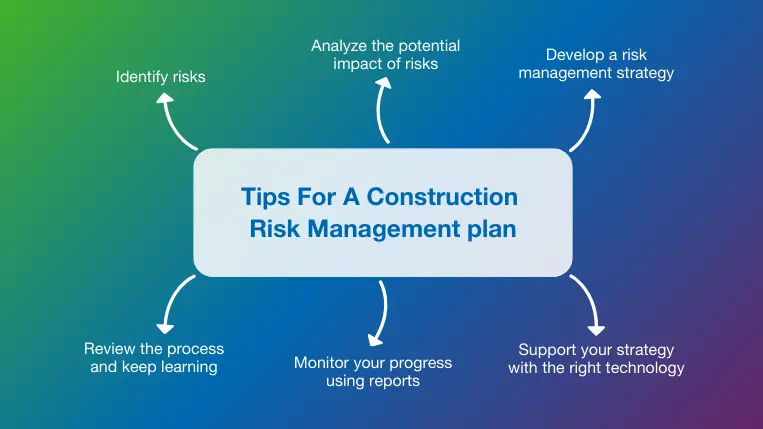Why the Importance of Risk Management Cannot Be Ignored in Today’s Economy
Why the Importance of Risk Management Cannot Be Ignored in Today’s Economy
Blog Article
Exploring the Significance of Risk Management for Effective Decision-Making Techniques
In the intricate world of organization, Risk Management emerges as an essential factor in the decision-making procedure. The capability to determine prospective risks and possibilities, and strategize accordingly, can lead to the difference in between success and failing. With devices such as SWOT and PESTEL, companies are outfitted to make educated selections, fostering durability and flexibility in an ever-changing environment. Wondering exactly how this works? Let's unload the characteristics additionally.
Understanding the Principle of Risk Management
Risk Management, an important component in decision-making, is usually misinterpreted or oversimplified. Risk Management involves self-displined and structured methods, making use of information and informative assessments. From monetary uncertainties, lawful liabilities, calculated Management errors, to accidents and all-natural calamities, it deals with various dangers - importance of risk management.
The Duty of Risk Management in Decision-Making Processes
In the realm of critical planning and service procedures, Risk Management plays an indispensable duty in decision-making processes. It helps in determining possible dangers and unpredictabilities that can affect the success of business objectives. By mapping these threats, business can formulate techniques to mitigate their effect, guaranteeing company connection and stability. Risk Management hence becomes a vital device in decision-making, aiding leaders to make informed options based upon a comprehensive understanding of the risks involved. It urges a positive technique, allowing companies to expect and prepare for feasible future scenarios. This substantially decreases the probability of unfavorable consequences, advertising extra effective and efficient decision-making approaches. As a result, Risk Management functions as an important component in the decision-making processes of any kind of company.

How Risk Management Enhances Strategic Planning
In the context of strategic planning, Risk Management plays a crucial function. Starting with the recognition of potential threats, it even more encompasses the execution of Risk mitigation steps. The function of Risk Management is vibrant but not fixed, as it requires constant surveillance and adjusting of approaches.
Determining Potential Dangers

Carrying Out Risk Reduction
Risk mitigation strategies can range from Risk evasion, Risk transfer, to risk decrease. Each approach should be customized to the details Risk, considering its prospective effect and the company's Risk resistance. Effective Risk reduction requires a deep understanding of the Risk landscape and the possible impact of each Risk.
Monitoring and Changing Strategies
Though Risk mitigation is a critical action in calculated preparation, continual monitoring and modification of these strategies is just as vital. This recurring process enables companies to identify new threats and reassess existing ones, making sure the carried out methods remain effective in the ever-changing company atmosphere. It likewise supplies an opportunity to examine the success of the Risk Management actions, permitting adjustments to be made where required, website link further boosting critical preparation. Effective tracking and modification call for using analytics and key efficiency signs (KPIs) to determine performance. These devices supply beneficial data-driven understandings that can notify critical decision-making. For that reason, tracking and readjusting Risk Management approaches is an important element for improving a company's strength and tactical planning.
Case Studies: Successful Risk Management and Decision-Making
In the globe of business and financing, successful Risk Management and decision-making often serve as the columns of prosperous ventures. These instances highlight the value of sharp Risk Management in decision-making processes. These situations highlight the essential function of Risk Management in strategic decision-making.
Tools and Techniques for Reliable Risk Management
Navigating the detailed puzzle of Risk Management needs the right collection of strategies and tools. These devices, such as Risk signs up and warmth maps, help in recognizing and assessing possible risks. Strategies include both quantitative techniques, like sensitivity analysis, and qualitative approaches, such as SWOT analysis. These aid in prioritizing dangers based upon their potential effect and chance. Risk response approaches, a key part of Risk Management, entail accepting, staying clear of, moving, or mitigating dangers. Monitoring and controlling threats, with regular audits and testimonials, make certain that the strategies continue to be effective. With these devices and methods, decision-makers can navigate the complicated landscape of Risk Management, consequently facilitating educated and reliable decision-making.
Future Patterns in Risk Management and Decision-Making Strategies
As we explore the vast landscape of Risk Management, it ends up being obvious that the techniques and devices utilized today will proceed to progress. The principle of Risk society, try this website where every member of an organization is conscious and involved in Risk Management, will get more importance. These trends declare a more positive and inclusive strategy in the direction of Risk Management and decision-making.
Verdict

Risk Management thus comes to be a vital device in decision-making, helping leaders to make informed options based on a thorough understanding of the threats entailed. Risk reduction methods can vary from Risk avoidance, Risk transfer, to risk reduction (importance of risk management). Effective Risk reduction needs a deep understanding of the Risk landscape and the possible impact of each Risk. Risk feedback methods, a key part of Risk Management, include approving, avoiding, transferring, or mitigating risks. The concept more information of Risk society, where every participant of a company is conscious and involved in Risk Management, will certainly acquire much more prestige
Report this page